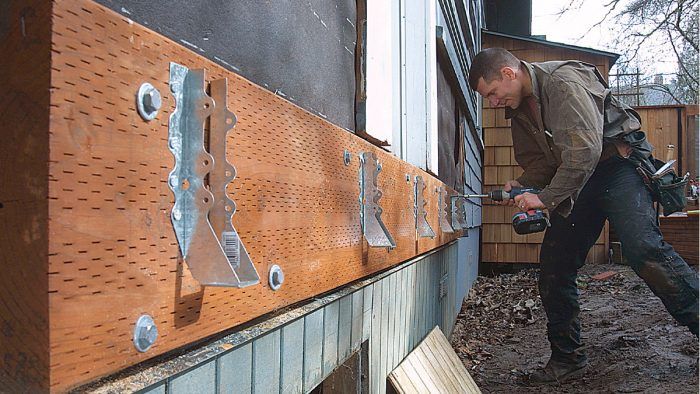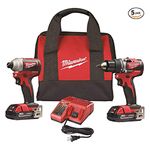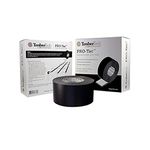Make Any Deck Ledger Secure
Following code ensures a safe, strong ledger connection—but what do you do when the conditions don’t meet the code’s criteria?

Synopsis: Code updates have made standard ledger attachments safer than ever, but you still need to judge when they can be used.
There are more than 10 critical connections that keep any deck in place and safe. The one that’s received the most attention by code officials and deck builders over the past few years is also one that I see done inadequately more often than done well: the ledger-to-house connection. There are two parts to any ledger connection that must be addressed when building a deck: the vertical load and the lateral load. My focus here is on the vertical load.
The cause for concern is obvious: An improperly attached ledger can lead to a deck collapse. While the 2012 International Residential Code (IRC) is a minimum construction standard, in the case of deck ledgers it reaches close to the level of best practices for lag-screwing and through bolting, and it includes a prescriptive fastener table (table R507.2). This is good news provided you recognize where the prescriptive methods can be used and, more important, where they can’t.
When code doesn’t work
A prescriptive code is like a cookbook: Follow the recipe, and you end up with a cake. The code table for lag screws and bolts has limitations, however. It is applicable only for decks with southern-pine or hem-fir ledgers mounted to a house with a 2-in. nominal SPF rim joist or 1-in. by 9 1⁄2-in. Douglas fir LVL rim board. There are other qualifications listed in footnotes. Half of the last 10 houses I built decks onto had conditions that fell outside the IRC guidelines, so I had to look to other attachment methods. Still, the IRC is a good place to start an examination of ledger mounting methods because it includes some best practices that apply to many ledger-attachment schemes.
While I refer to the IRC for code references, keep in mind that your local official is the final authority, so check before applying any practices or alternative materials mentioned here.
Skipping the ledger altogether
Because of the cladding type or framing details, you sometimes can’t mount a deck ledger to a house without employing a unique engineered design. Veneer brick, stucco, and stone claddings aren’t structural, so the ledger either must be mounted directly to the frame of the house (which involves cutting through and then flashing to the cladding, and supporting the cladding around the ledger), or the ledger must be supported independently of the house. Balloon framed homes, open-web floor-trussed homes, and some engineered I-joist homes can’t support deck ledgers directly. Code doesn’t permit mounting a ledger to a cantilevered floor, because the rim joist doesn’t bear directly on a wall or foundation. In these cases, you can have an engineer design a ledger connection or employ another workaround, but it may not be worth the effort. In these cases, I often opt for a freestanding deck, which can be simpler to build and more cost-efficient when compared to the cost of curing a challenging ledger situation. Freestanding doesn’t mean the deck can’t be attached to the house; it just means that the deck frame must be self-supporting. As long as the deck has footings all around, you can bolt or screw it to the house frame.
EDITOR’S NOTES:
Page 32 – the hole drilled through the ledger board is not a ‘pilot hole’; the correct term is ‘clearance hole’.
Page 33 – The on center spacing and prices listed for the screws listed have changed and several other screw brands/models now have prescriptive spacing tables for deck ledger installation. Those include Big Timber, SPAX and MiTek. See manufacturers’ current information for proper spacing.
Page 34 – Attach-A-Deck is no longer available but there are new products on the market that space the ledger off the wall. BR Brick Bracket, MetWood Deck Bracket.
Page 35 – The website link to the Fairfax County, VA publication has changed. It’s now fairfaxcounty.gov/landdevelopment
For more photos, drawings, and details, click the View PDF button below:
Fine Homebuilding Recommended Products
Fine Homebuilding receives a commission for items purchased through links on this site, including Amazon Associates and other affiliate advertising programs.

Drill Driver/Impact Driver

Flashing and Joist Tape

FastenMaster Screw Bolt Fastening System






